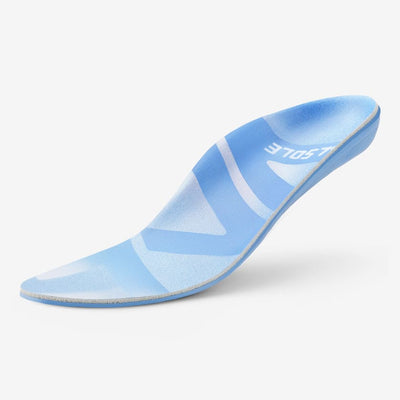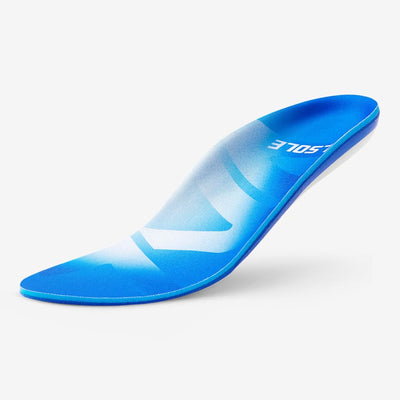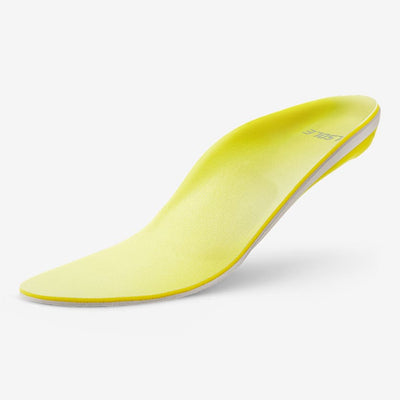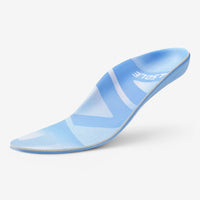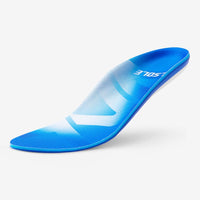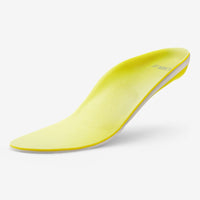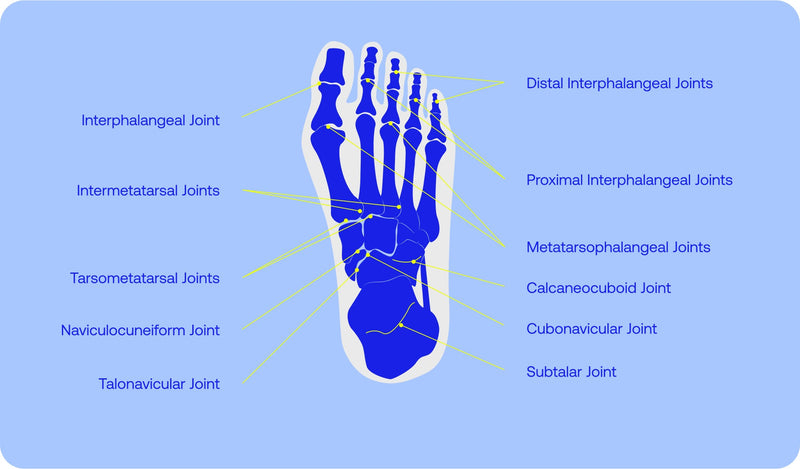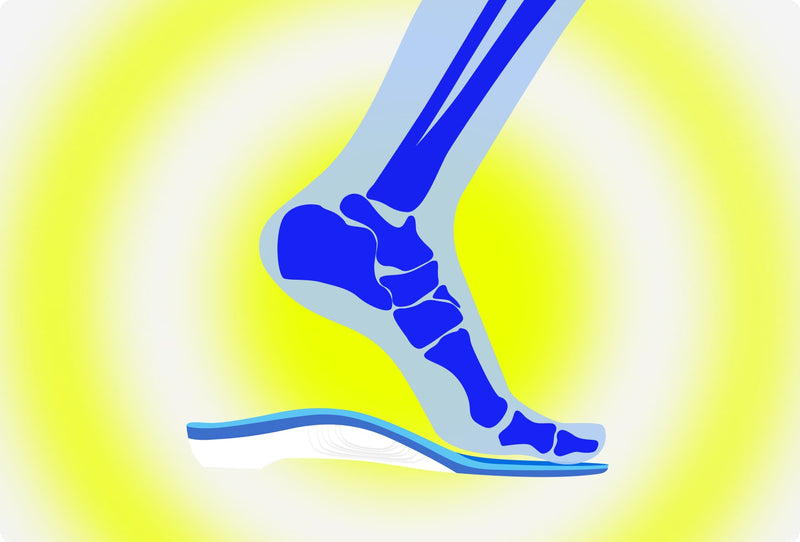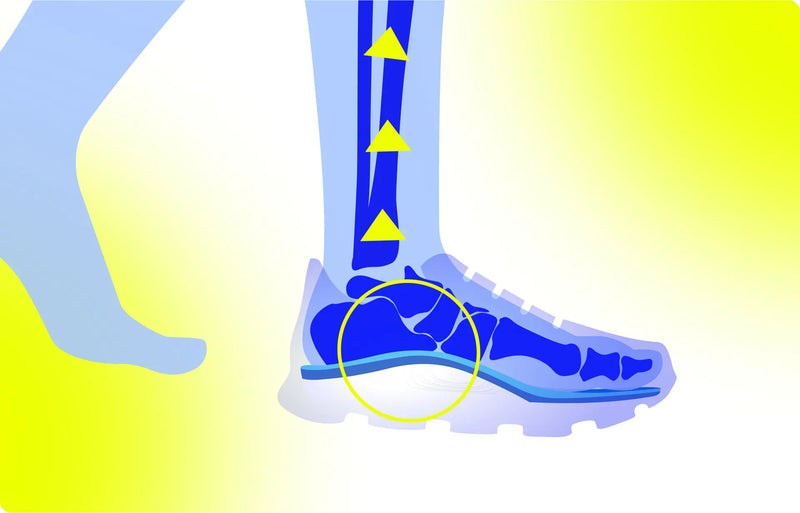How Insoles Can Help with Pregnancy-Related Foot Pain

Pregnancy is a transformative time for a woman's body, often accompanied by significant physical challenges, including foot pain, swelling, and discomfort. These issues stem from hormonal changes, weight gain, and altered posture that strain the feet and lower body. This blog explores how specialized insoles can provide much-needed support, alleviating common pregnancy-related foot problems such as overpronation, heel pain, and swelling. By redistributing pressure, improving arch support, and enhancing overall comfort, insoles emerge as a simple yet effective solution for expecting mothers. Whether worn with casual flats, athletic shoes, or maternity-friendly footwear, these inserts can make a great difference in daily comfort and long-term foot health during the pregnancy.
Understanding Pregnancy-Related Foot Pain
The root causes of foot pain while pregnant are quite intricate: Hormonal shifts, particularly the release of relaxin, cause ligaments in the feet to loosen, potentially leading to flat feet or overpronation. Natural pregnancy related weight gain further compounds this issue, as the added pressure can strain the plantar fascia and increase the risk of heel pain and swelling (Greater Washington Advanced Podiatry, n.d.). Changes in posture also occur throughout the entire pregnancy, as the growing belly shifts the body’s center of gravity, placing additional stress on the lower limbs, exacerbating discomfort (Abadi, 2018). In some cases, pregnant women might notice one foot is more swollen than the other, such as the left foot being more swollen than the right during pregnancy. This shift in asymmetry is a significant detail that can make mobility even more challenging. This circles back on establishing the feet and foot health as a foundation for the entire physical body to rely on, as mentioned in our blog, “Foot Anatomy 101.”
Pain on top of the foot while pregnant is another frequent complaint and issue that women face, often caused by this increased pressure and swelling. These problems can also lead to discomfort in other areas of the feet and legs, including foot cramps, which can strike unexpectedly and disrupt daily activities (National Center for Biotechnology Information, 2004).
The Role of Insoles in Addressing the Foot Pain
Foot insoles specifically designed to address foot problems that tend to occur during pregnancy offer a transformative and effective solution for alleviating the discomfort and challenges many expectant mothers face. While insoles might not always be the first option that comes to mind during pregnancy, incorporating the use of them into a normal routine can offer a range of benefits that might make a significant difference in daily comfort and overall well-being.
Here’s how these insoles can help:
Redistributing Pressure
VALSOLE insoles are carefully engineered to offer enhanced stability and balance, working by redistributing body weight evenly across the feet. During pregnancy, as the body undergoes changes, extra weight is placed on the feet, creating localized pressure points. These pressure points can lead to pain, discomfort, and swelling, particularly in the heel and arch areas. The insoles help to alleviate this pressure by spreading the weight more evenly, reducing the strain on these sensitive areas. This makes a noticeable difference when daily activities become increasingly uncomfortable due to these bodily shifts, especially during the more challenging stages of pregnancy.
Improving Arch Support
Pregnancy often leads to changes in the structure and function of the feet, including the development of fallen arches or overpronation, which occurs when the foot rolls excessively inward. This is caused by the hormonal changes that loosen ligaments and joints in preparation for childbirth. Insoles that offer built-in arch support can counteract this by providing the necessary support to maintain the foot’s natural alignment. This prevents the feet from rolling inward too much, thus reducing strain on the plantar fascia, which is the ligament that connects the heel to the toes. By stabilizing the foot structure, insoles help to prevent the pain and discomfort associated with fallen arches, promoting better posture and reducing the likelihood of injury (National Center for Biotechnology Information, 2004).
Enhancing Comfort
As the pregnancy progresses, expectant mothers often experience increased fatigue and discomfort from prolonged standing, walking, or simply going about their daily activities. Insoles help to enhance comfort by providing additional cushioning to the feet, absorbing shock, and reducing overall foot fatigue. The extra cushioning helps to lessen the impact from walking on hard surfaces, making it easier to perform everyday tasks such as running errands, shopping, or taking short walks. This increased comfort encourages pregnant women to stay active and maintain a healthy lifestyle, which is essential for both their own well-being and the health of their baby (Abadi, 2018).
Complimentary Care for Pregnancy-Related Foot Pain
While insoles are a major addition of support, additional measures can further help in combating foot discomfort during pregnancy. Popular methods include:
-
Foot Massage While Pregnant: Relax tired muscles and improve circulation. When receiving a foot massage while pregnant, it should be done gently and by a trained professional to avoid triggering pressure points that could induce labor (Greater Washington Advanced Podiatry, n.d.).
-
Foot Soak for Pregnant Feet: By soaking feet in warm water combined with Epsom salts, the combination can aid to reduce inflammation and provide soothing relief. Pregnant women often ask, “can I use a foot spa while pregnant?” While foot spas can be beneficial, avoid excessively hot water and ensure the device is clean to prevent infections (Abadi, 2018).
-
Compression Socks: Wearing compression socks, such as those offered by VALSOLE can help reduce swelling and improve circulation, especially if one particular foot is swelling more frequently than the other.
-
Gentle Exercises: Small yet impactful practices such as toe stretches, ankle rotations, tennis ball exercises, and calf stretches can help ease foot cramps while pregnant, also improving flexibility.
-
Elevating the Feet: Resting with your feet elevated can reduce swelling and promote blood flow.
-
Hydration and Balanced Diet: Staying hydrated and consuming foods rich in potassium can help prevent foot cramps and manage swelling.
-
Cold Compresses: Applying a cold compress, reversing the warm solution of a foot soak for a cold remedy, can provide immediate relief from swelling and inflammation.
Managing Other Foot Concerns During Pregnancy
Pregnancy often brings an even broader range of foot-related issues beyond the common ones mentioned above that can cause discomfort and concern. One of the most habitual problems is swelling, particularly in the feet and ankles. Many women seek advice on how to reduce foot swelling and alleviate discomfort during this time. Strategies such as elevating the feet, staying hydrated, and wearing compression socks are effective ways to manage swelling (National Center for Biotechnology Information, 2004).
Incorporating insoles into daily footwear can significantly reduce swelling by promoting better circulation and alleviating pressure points. The insoles help distribute weight more evenly across the feet, easing the discomfort caused by fluid retention. This is particularly beneficial for women who experience uneven swelling, such as when one foot (like the left foot) swells more than the other. Insoles can help restore balance and comfort, ensuring both feet receive adequate support (Abadi, 2018).
Beyond swelling, pregnancy can also bring other foot concerns. For example, athlete’s foot, though less common, can still occur due to hormonal changes and increased perspiration. The warm, moist environment inside shoes can create conditions for fungal growth. If you're wondering how to treat athlete’s foot during pregnancy, antifungal creams prescribed by a doctor are generally safe options, as long as the doctor is aware of the pregnancy. However, preventing athlete’s foot is just as important, and keeping the feet dry and clean is essential. Regular washing, thorough drying, and wearing breathable shoes and socks can help reduce the risk of fungal infections (Greater Washington Advanced Podiatry, n.d.).
Additionally, some pregnant women turn to alternative foot care solutions, such as detox foot pads or foot massage machines, in hopes of finding relief from foot pain or fatigue. While detox foot pads are generally not recommended due to a lack of scientific evidence supporting their safety and effectiveness, foot massage machines can be safe when used gently and on low settings (National Center for Biotechnology Information, 2004). These machines can help improve circulation, reduce foot tension, and provide soothing relief from the stresses of pregnancy, as long as they are used cautiously and under the guidance of a healthcare provider.
Long-Term Benefits of Insoles During Pregnancy
Using insoles during pregnancy not only alleviates immediate discomfort but also contributes to long-term foot health by lessening direct pressure. By providing proper support, insoles can help alleviate pain from chronic issues such as plantar fasciitis or joint pain, which might arise from prolonged strain on the feet during pregnancy and even continue to cause troubles after the pregnancy is over (National Center for Biotechnology Information, 2004). Specifically relevant to women throughout their pregnancy, maintaining foot comfort is a great practice that encourages physical activity, which is a core factor of overall maternal health (Greater Washington Advanced Podiatry, n.d.).
When selecting the right insoles from the VALSOLE collection, pregnant women should prioritize comfort and support. Look for features like:
-
Arch Support: Helps prevent overpronation and relieves strain on the plantar fascia.
-
Cushioning: Provides shock absorption and enhances overall comfort.
-
Breathability: Keeps feet cool and dry, reducing the risk of skin irritation or infections (Abadi, 2018; Greater Washington Advanced Podiatry, n.d.).
These insoles can be easily inserted into various types of footwear, including casual flats, athletic shoes, and maternity-specific footwear, making them a versatile option for daily use.
By redistributing pressure, improving arch support, and enhancing overall comfort, insoles can play a crucial role in promoting both immediate and long-term foot health. Through implementing these additional measures and at home remedies such as foot soaks, massages, and proper footwear that further enhance the benefits of insoles and alleviate the pain, this can truly help mothers-to-be focus on enjoying their pregnancy journey with greater ease and comfort and less worries overall.
References
-
Abadi, A. (2018). Pregnancy and Foot Pain. Dr. Aliabadi. Retrieved January 16, 2025, from https://www.draliabadi.com/womens-health-blog/pregnancy-causes-foot-pain/#:~:text=Due%20to%20hormones%2C%20rapid%20body,cause%20pain%20in%20severe%20cases.
-
Greater Washington Advanced Podiatry. (n.d.). Pregnancy and Foot Pain. Retrieved January 16, 2025, from https://www.gwapodiatry.com/blog/pregnancy-and-foot-pain.cfm#:~:text=Over%2Dpronation%20and%20decreased%20balance,provide%20relief%20from%20foot%20problems.
-
National Center for Biotechnology Information. (2004). The effects of pregnancy on foot structure and function. PubMed Central. Retrieved January 16, 2025, from https://pmc.ncbi.nlm.nih.gov/articles/PMC11121192/

